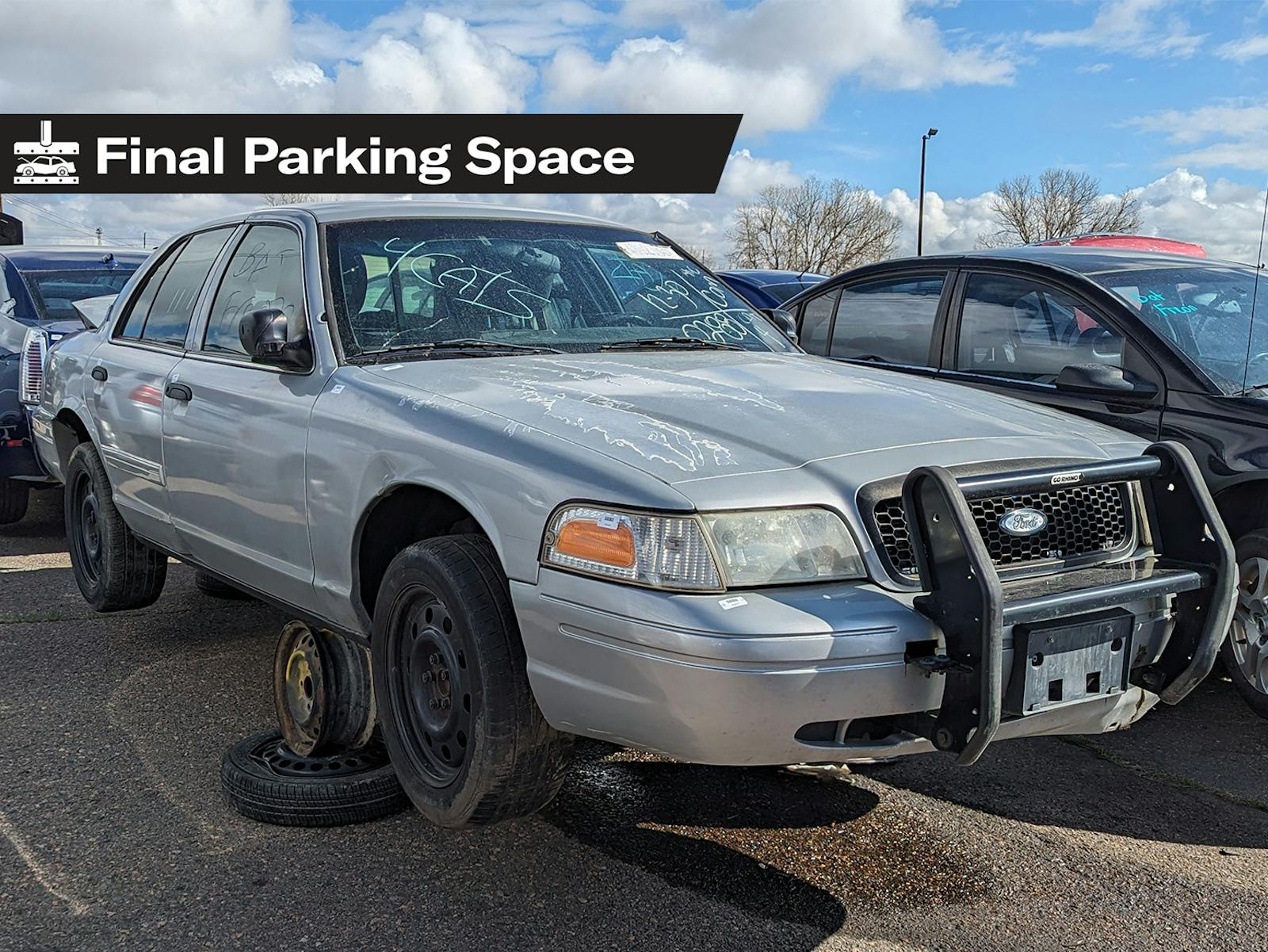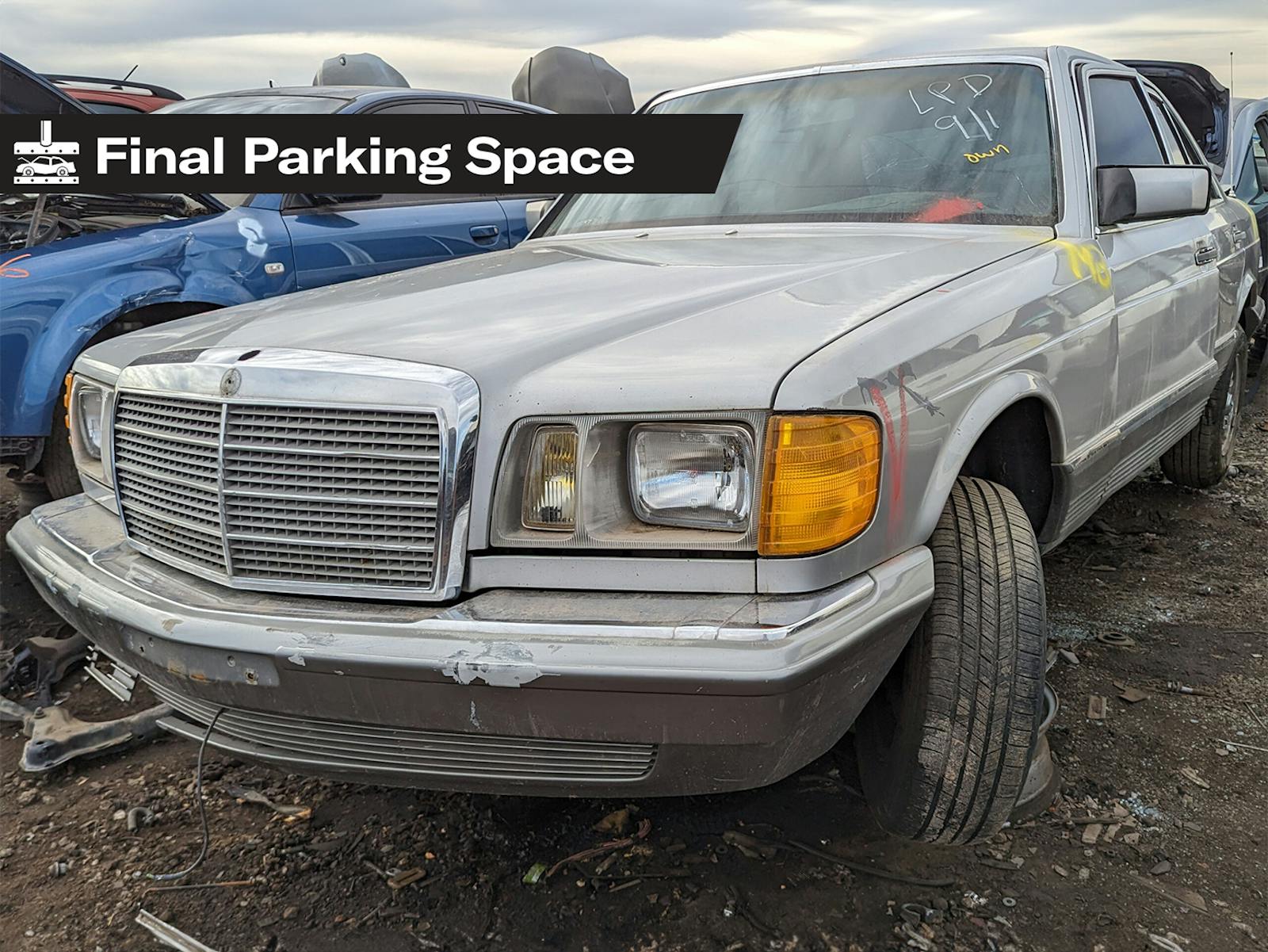1973 Imperial LeBaron: Those were the days!
When I start waxing nostalgic on classic land yachts of yore, I often go overboard in my appreciation. I have a feeling that the title of this piece may provoke some passionate responses: Those were the days? 1973?! Gas lines, park bench bumpers, strangled performance, and muscle cars halfway out the door? What?!
Bear with me. In 1973, new car buyers still had a lot to choose from, no one had yet uttered the dreaded word “crossover,” and pickups were for people who, well, frequently needed a pickup.
Yes, in the early 1970s, you still had choices. And variety as well: personal luxury cars; full-sized family cars; a rising tide of efficient, well-made, and attractive (albeit horribly rust-proofed) Japanese vehicles; station wagons (with or without Di-Noc, at your pleasure); hardtops; and convertibles.
You had variety in color, too. Silver, gray, and black were available, of course, but people were more interested in standing out than blending in. Resale value? Colors affecting trade-in value? I believe very few worried about those things in ’73. There was a virtual kaleidoscope of color charts for 1973 models, be they domestic, Asian, or European. Want a red Volvo 144E with red vinyl? No problem. Triple white Eldo convertible, with navy dash and trim for the yacht club? Sure. Bright blue 240Z with white buckets? You got it! Various shades of metallic brown and green were especially popular, of course.
20190808131605)
And there were Broughams! I still consider 1976 to be peak Brougham, but 1972–73 was no slouch. Long, lush, lovely Broughams. Baby Broughams like the new X-Body Buick Apollo and Oldsmobile Omega. Midsize Broughams like the Colonnade Cutlass Supreme coupe, Mercury Montego MX, and Pontiac Grand Prix, which sported genuine wood trim on its wraparound instrument panel and doors. And of course, the big, comfortable top-tier Broughams from Cadillac, Lincoln, and Imperial reigned over them all and were frequently spotted at corporate office parks, golf courses, and supper clubs everywhere.
20190808131612)
Yes, Imperial was still around in ’73, though you could be forgiven for forgetting it. Sales had steadily tapered off since the mid-’60s, and despite an attractive facelift of the Fuselage Imperial for 1972, there just weren’t too many folks willing to pay $1500 more than a Chrysler New Yorker Brougham—a car that clearly shared a lot with the pricier Imperial.
The 1973 Imperial was offered only in LeBaron trim, with the final Crowns coming off the line for the 1970 model year. You had your choice of the $7313 two-door hardtop or $7541 four-door hardtop. All, naturally, were powered by a 440-cid V-8 with 215 horsepower at 3600 rpm.
When compared to the top-of-the-line standard Chrysler the New Yorker Brougham, the Imperial had different (albeit similar) sheet metal, hidden headlights, and standard air conditioning ($420.85 for manual A/C and $495.15 for AutoTemp in New Yorkers).
It also retained the loop bumper up front, unlike the Chryslers, which got blockier, conventional bumpers that, while not bad, were somewhat at odds with the curvy Fuselage style.
But, as the best Chrysler Corporation had to offer, the LeBaron had a lot of cool little details, such as that amazing rear bumper, rear side marker lights disguised as Imperial eagle emblems, the aforementioned hidden headlights, and elegant tailoring. It almost looked like a coachbuilder-customized New Yorker—which is essentially what it was.
20190808125227)
One notable option on Imperials was a power sunroof, for a hefty $584.75. I can’t imagine too many popped for the sunroof, so this car is probably rare even among other 1973 Imperials. As you can see in this shot, it was generously sized, like everything else on the Imperial.
20190808125238)
This attractive cloth was standard on LeBarons, but as you would expect, leather trim was available as an option. I always really liked the no-nonsense instrument panel on Fuselage Mopars, with everything easily falling to hand and logically laid out. The Imperial version, of course, had more imitation wood and padding, but was not very different from the Newports and New Yorkers it shared showrooms with.
20190808125251)
Out back, you not only had ample leg room, but a built-in pillow on the C-pillar and lavaliere straps to assist your entry and exit. Combined with the pillarless body style, this would be an excellent car to ride in in early spring with all four windows down.
20190808125302)
The driver’s compartment was not shabby either, with a split bench and his-and-hers folding armrests. The door panels also had concealed storage, something that I always associated with Lincolns (my grandparents’ 1987 had them, as did various Town Cars through the 1990s and 2000s). But it appears Chrysler was first. Or was there another car that had them even earlier?
20190808125312)
But as a 1973 hardtop, the shoulder belts were separate from the lap belts. As it was kind of a pain to slide them out from their clips in the headliner, most folks just left them up. My brother’s first car, a 1973 ’Cuda 340 purchased in 1999, had the same thing.
20190808131649)
My favorite option was these groovy bucket seats, as shown in the 1973 Imperial deluxe brochure. Wow! I love these things, and would have not hesitated to check the box on the order form, had I been in the market for luxury Mopars in 1973—but I imagine they were not commonly ordered.
20190808125336)
I spotted this remarkably nice LeBaron sedan at a garage back in November of 2013. I loved the color combo. That deep metallic blue is a great contrast to the ample chrome trim, the white top is perfect, and the blue interior—a perfect match to the paint. To be frank, I was practically tripping over my tongue when I saw this fine specimen, stumbling out of my car with camera in hand.
And yes, though I get really tired of eBay listings and other online classifieds saying “Chrysler Imperial” for a 1958, 1964, or 1951 model; sadly, it was technically correct for 1973. I am not precisely sure when the little “by Chrysler” emblem was added, but I think it may have first been in 1972.
20190808125521)
And the sunroof was just the icing on the cake. That is a seriously large sunroof opening. With it and all the windows down and the hardtop roof, it must have felt like driving a convertible.
I was also impressed with this car’s originality. No silly non-factory paint colors, no huge aftermarket wheels, no bad JC Whitney do-it-yourself window tint. Just a nice, clean car. Well, except for that bug deflector and what appeared to be a CB antenna mount on the trunk lid.
Factory wheel covers, whitewall tires, original chrome, original trim. And cornering lamps, standard of course.
20190808125600)
Here we can see the “rubber baby buggy bumpers” added to Imperials comply with the new bumper regulations for 1973. Although not the most beautiful bumper guards out there, they are worlds better than some styles tacked onto other 1973 motor cars.
Although a true blue member of the Brougham Brigade, the 1973 Imperial LeBaron wore the final vestiges of the smooth lines seen on American cars from—oh, say about 1965: clean styling, smoothly shaped and curved sheet metal. The more baroque opera lamps, landau tops, and ample crushed-velour gingerbread and filigree were just around the corner; but in ’73, the big Mopars, from taxicab-grade Plymouth Fury to Imperial, were rather clean, cohesive, and most attractive.
As I have heard tell, the ’73 was to be the last Imperial; but a chance sighting of a design sketch at Highland Park led to a stay of execution for the beloved but slow-selling Imperial. Said new model, debuting in 1974 as the last all-new Imperial, did not sell well at all though it was a classy and rather ornate car. After being slightly de-glitzed, it reappeared in 1976 as the “new” New Yorker Brougham, where it sold well beyond any Imperial of recent memory.
I will always have a soft spot for the 1972–73—for their rarity, for their luxuriousness that never compromised those clean lines, but most of all for their honorable continuation of one of the best luxury car names ever—Imperial.
20190808125058)
20190808131556)
20190808125134)
20190808125143)
20190808131621)
20190808125206)
20190808125216)
20190808125456)
20190808125508)
20190808125534)
20190808125548)
20190808125616)
20190808125627)
20190808125644)

